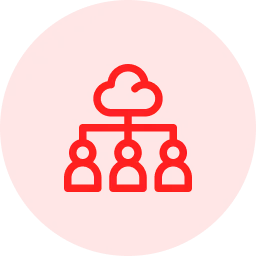Managing commission plans across a distributed network of retail outlets can be chaotic, especially when each location has different targets, staffing structures, or product focuses. Incentivate enables centralized plan design with localized flexibility, allowing you to tailor rules per outlet, automate calculations, and ensure consistent governance without relying on spreadsheets.

Incentive Compensation Management For Retail Outlets
Retail outlets are the backbone of the retail industry, serving as the direct point of interaction between businesses and their customers. These outlets showcase a brand's products and play a pivotal role in driving sales and enhancing customer experience. Sales personnel at retail outlets are the face of the business, responsible for guiding customers through their purchase journey, addressing their needs, and delivering personalized service. Beyond sales, they play a crucial role in customer acquisition by building trust, educating customers about products, and fostering long-term loyalty. Retail outlets are the key drivers of in-store engagement, translating footfall into meaningful customer relationships and sustained revenue growth.

Key Performance Indicators (KPIs) for Salespersons in Retail Outlets

Tracks the variety of product categories a salesperson sells, ensuring alignment with strategic product priorities.

Measures the total revenue each salesperson generates, highlighting individual contribution to overall sales.

Tracks the sales of high-priority or promotional products to ensure their visibility and movement.

Monitors product returns and adjusts commissions accordingly to maintain fairness and accountability.

Assesses how efficiently inventory is tracked, stocked, replenished, and reported by frontline sales personnel.

Measures the percentage of walk-in customers converted into buyers, reflecting sales effectiveness.

CSAT tracks customer feedback and satisfaction levels post-purchase, ensuring a focus on service quality.

Evaluates the salesperson's ability to increase transaction value through additional product recommendations.

Measures the percentage of customers returning to the outlet, highlighting loyalty-building efforts.

Tracks participation in product knowledge or sales training programs to ensure continuous skill improvement.

Measures the average time taken to assist a customer and complete a transaction, reflecting efficiency in customer interactions.
Challenges
Managing the comprehensive set of KPIs for sales personnel across multiple outlets manually presents significant challenges for retail companies:

Manually tracking metrics such as billing value, product mix sales, and footfall conversion rates across numerous outlets can be time-consuming and prone to errors.

Ensuring that sales teams meet their daily or weekly targets requires real-time insights, which are challenging to achieve without automation.

Metrics such as repeat customer rate and CSAT require frequent updates and analysis, which can be overwhelming to handle manually across large outlet networks.

Evaluating individual or outlet-level performance against benchmarks or peers is challenging without centralized and automated data systems.

Delays in processing and communicating performance results can demotivate sales teams and negatively impact overall productivity.

Identifying areas for improvement, like inventory management or training participation, requires an understanding of KPIs, which is difficult without streamlined reporting.

Calculating commissions based on complex metrics, such as sales returns, exchanges, and focus product sales, as well as non-sales metrics like attendance, CSAT scores, and store hygiene, is labor-intensive and susceptible to inaccuracies when done manually.
Importance of an Effective Commission Plan
An effective retail commission plan is critical for organizations to drive performance, align employee goals with business objectives, and maintain motivation within their workforce. For retail outlets, such plans ensure that sales personnel remain focused on key metrics like product mix, billing value, and footfall conversion rates. By linking rewards to specific outcomes, businesses can-

Clear and achievable retail commission plans motivate sales teams to meet and exceed targets, directly driving revenue growth.

A well-structured plan fosters job satisfaction and loyalty, reducing turnover among skilled sales personnel.

Commissions can emphasize high-priority products, inventory clearance, or customer acquisition to ensure alignment with organizational goals.

Metrics like sales returns and clawbacks tied to commissions encourage sales teams to focus on sustainable sales practices.

Retail commission plans can strengthen brand loyalty by rewarding behaviors that lead to higher customer satisfaction, such as personalized service or upselling.

Retail commission plans are designed to optimize inventory management, training participation, and time-to-close sales, driving operational efficiency.
Conclusion

Frequently Asked Questions
How can I manage commission plans across multiple retail outlets efficiently?
Can Incentivate handle different commission structures for various roles within retail outlets?
Absolutely. Whether it's store managers, floor staff, or customer service reps, each role within your retail outlets can have its own rules, KPIs, and payout timelines. Our role-based engine allows for complete flexibility while maintaining a single source of truth across all locations.
How does Incentivate ensure data accuracy from hundreds of retail outlets?
Data from retail outlets is often messy in disparate formats, with delayed uploads or missing fields. Incentivate automates data profiling and applies over 7,000 validations to ensure accuracy before processing. This reduces errors, disputes, and delays, while giving your finance and ops teams confidence in every payout.
How can businesses automate complex retail commission structures?
Retail commission plans often vary by role, location, product category, and sales performance. Automating these structures requires a flexible platform that allows rule-based configuration, real-time data handling, and localized plan adjustments, without relying on spreadsheets or manual calculations.
Is it possible to measure the effectiveness of a retail commission program in real time?
Absolutely. With the right system, businesses can track key metrics such as revenue generated per commission dollar, outlet-level performance, and product-wise contribution. This helps decision-makers fine-tune their retail commission strategy for maximum ROI and agility.
How can companies reduce payout disputes related to retail commission plans?
Disputes often stem from a lack of visibility and unclear calculation logic. A transparent retail commission framework, featuring real-time dashboards, clear earnings breakdowns, and built-in audit trails, ensures that reps understand their commission payouts, leading to fewer escalations and improved trust.
